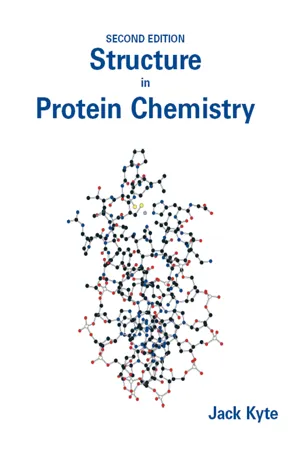![]()
Chapter 1
Purification
The living world that teems around us, the world of species, individual organisms, organs, tissues, and cells, can be viewed as the manifestation of a vast fluid array of protein molecules, each appearing and disappearing in the proper place at the proper time. This array of protein molecules is the outcome of a long history. Each protein within the array is itself the product of evolution by natural selection, which has had more than two billion years and much of the surface of the earth to explore, by random, irrational trial and error, strategies with which to accomplish the function of that protein. There are several consequences of this fact. First, chemical principles in addition to those of which we are aware have been discovered and exploited. Second, completely different chemical mechanisms often have been applied haphazardly to achieve similar purposes. Third, there are puzzling features that are inefficient, useless, or meaningless. Fourth, the result of this process does not resemble anything the human mind would have designed, even if it were aware of all of the available chemical strategies. One consequence of these facts is that argument by exclusion is useless because it cannot be assumed that the mechanism by which a biological problem was solved is only one or more of the mechanisms of which we can conceive.
One fruitful approach in our attempt to understand life has been to study, individually or in small groups, the proteins that produce it to gain insight into the role of each one in the overall scheme. An argument could be made that a cell does seem to be no more than the sum of its parts and that a significant understanding of how it accomplishes its purpose can be gained by studying those parts individually. Because the proteins are the parts of a cell that perform almost all of the chemical and structural transformations that occur within it, they have attracted the most attention.
The most dynamic region in a living organism is the cytoplasm of the cells or cell from which it is made. About 20–30% of the total mass of cytoplasm is protein dissolved in a solution the solvent of which is water. The cytoplasm is enclosed within a thin, fragile, continuous membrane. About 60–80% of the dry weight of this membrane is protein dissolved in a solution, the solvent of which is lipid. This membrane is surrounded and supported by a tough protective integument of polysaccharide; polysaccharide and protein; or polysaccharide, lipid, and protein. Organelles, enclosed within their own membranes, are often scattered through the cytoplasm. In a eukaryotic cell the largest of these is the nucleus, containing most of the nucleic acid in the cell.
The strategy that has been applied most frequently to the study of proteins is to identify a particular biological feature of a living organism and then purify the protein or proteins responsible for it. Typically, when a complex, beautiful, intricately organized biological specimen, such as a tissue or a suspension of cells, is submitted to the first step in any purification procedure, it is immediately sundered beyond recognition and becomes a nondescript jumble of its organelles and broken fragments of its membranes and their integuments suspended in an aqueous solution of proteins, nucleic acids, metabolites, and salts. This event is referred to as homogenization. It is usually accompanied by the dilution of the proteins in the initial specimen by addition of a buffered aqueous solution. Following the homogenization, insoluble fragments are removed by centrifugation to produce a clear solution, the protein concentration of which is 1–10%. This solution contains most of the proteins that were once the living cytoplasm of the specimen. It is from this solution that particular proteins can be isolated. The purification of a protein is the separation of that protein from all of the others in a homogenate. A particular protein must be purified before its molecular structure can be studied.
Usually, the only interest that one has in a particular protein arises from its participation in some process of biological importance. It might be an enzyme responsible for catalyzing a particular reaction; it might be a structural protein creating the macroscopic shape of the cell; it might be a protein that binds a hormone or neurotransmitter; or it might be a protein that binds to DNA and controls its transcription. To distinguish one protein from the others in a complex mixture, an assay for the protein of interest, based on its particular function, is required.
The most widely used procedure for purifying proteins is chromatography. This technique separates molecules of protein by differences in the rate at which they move along a cylinder of a porous solid phase as a liquid phase percolates through it. If the solid phase is properly chosen, each protein travels through the cylinder at a different rate and each emerges in the solution coming out of the cylinder at a different time. In this way, one can be separated from the others. In order to distinguish the protein of interest from the others as they emerge from the chromatographic column, the assay for that protein is used. As the protein becomes purified, the preparation displays greater and greater activity in the specific assay for a given amount of total p...
